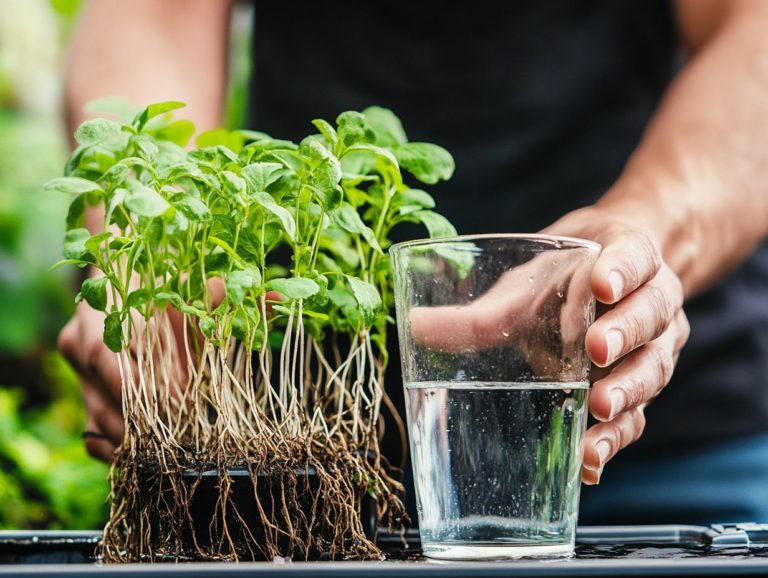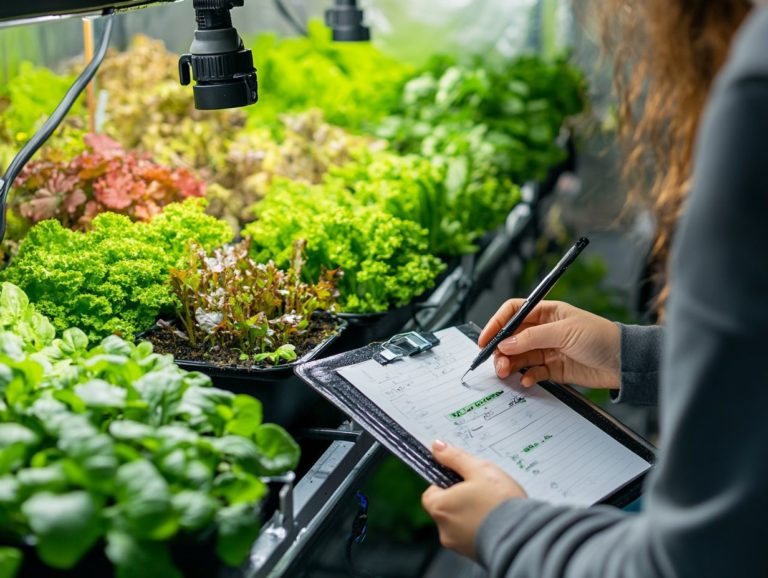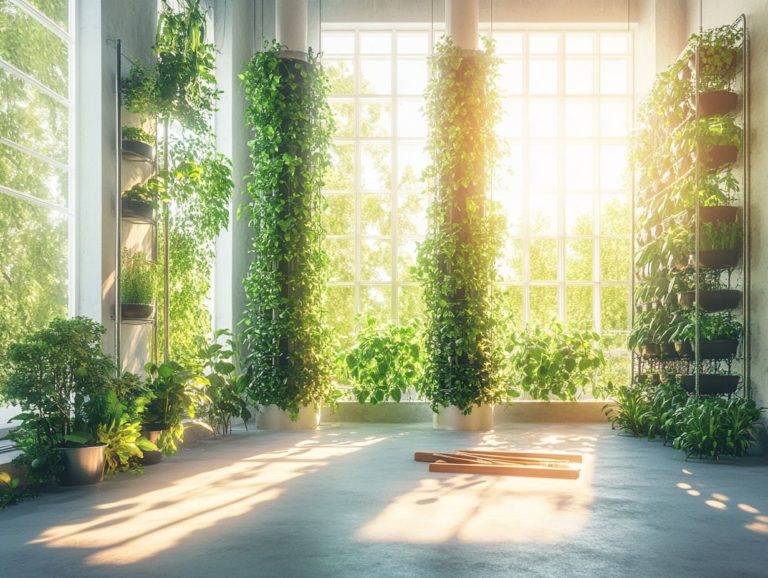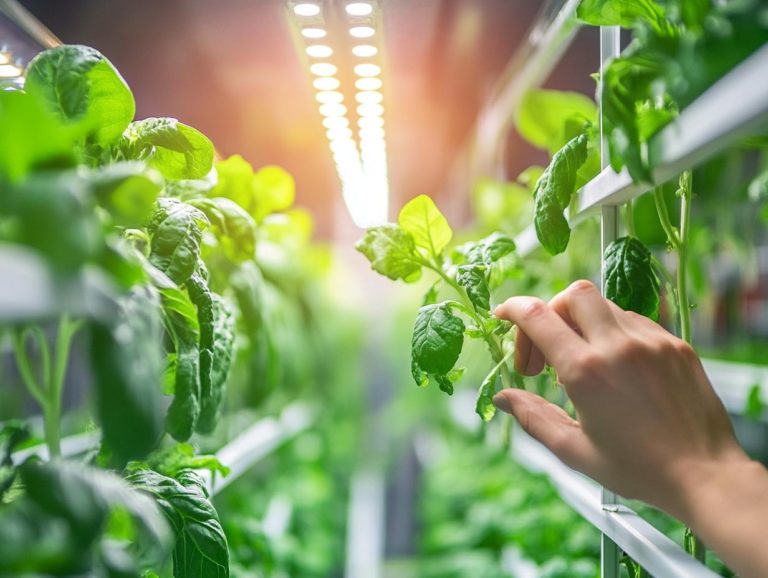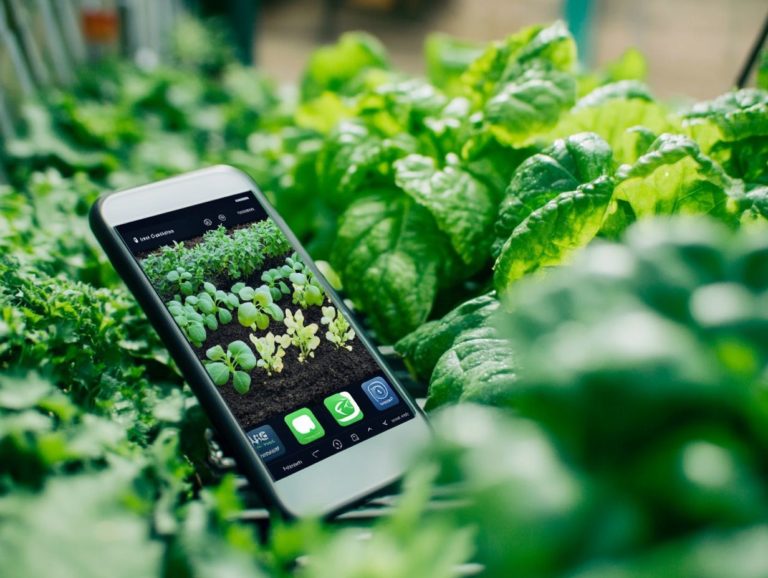What is the Difference Between Hydroponics and Soil?
Understanding the nuances of hydroponics and traditional soil gardening can truly elevate your approach to plant cultivation. Discover how you can transform your gardening experience today!
This article explores the definitions and fundamental concepts of both methods, showcasing the distinctive advantages of hydroponics alongside the timeless benefits of soil gardening.
You’ll uncover the key differences between these two styles and gain valuable insights to help you select the right method for your garden.
Whether you re a seasoned gardener or just starting your green journey, this guide equips you with essential tips for successful cultivation.
Contents
Key Takeaways:
- Hydroponics involves growing plants in water.
- Soil gardening involves growing plants in soil.
- Hydroponics offers faster growth and higher yields.
- Soil gardening provides natural nutrients.
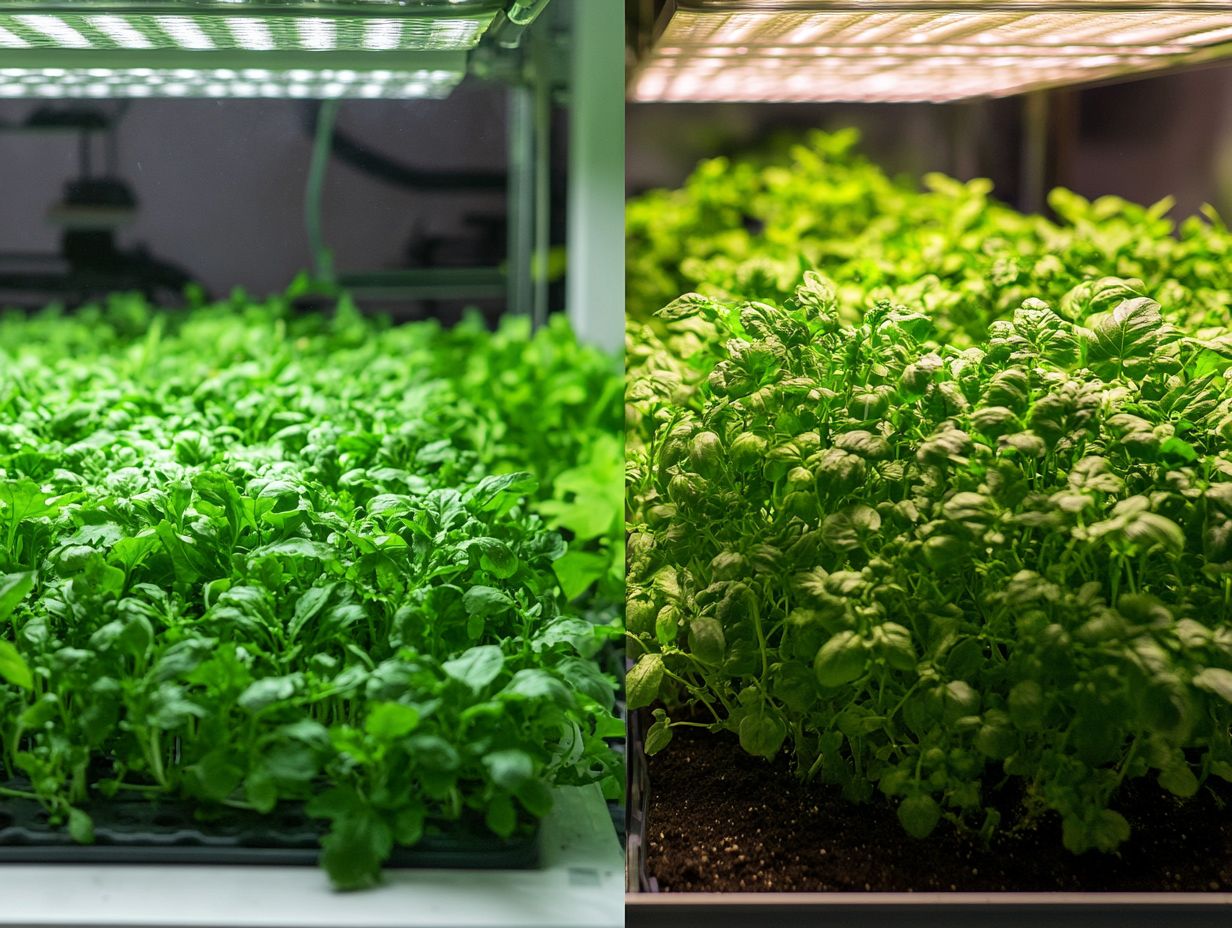
Understanding Hydroponics and Soil
Grasping the nuances of hydroponics and soil is vital for any aspiring gardener eager to cultivate a diverse array of crops, particularly in an age where agricultural technology is rapidly advancing.
Hydroponics allows you to grow plants without soil. This method presents distinct advantages such as efficient water usage, precise nutrient management, and a reduced environmental footprint compared to conventional farming practices.
Soil-based gardening has its own merits, including a natural nutrient supply and the time-honored traditions that many gardeners hold dear. By diving into both approaches, you can uncover their respective benefits and understand how they each contribute to sustainable farming.
Definitions and Basic Concepts
Hydroponics is a transformative approach to agriculture, cultivating plants in a nutrient solution instead of soil. This method enables you to exert precise control over nutrient levels and environmental conditions.
In contrast, soil gardening relies on the natural ecosystem of soil to furnish nutrients, embodying a more traditional practice embraced by generations of farmers.
Understanding the nuances between these two systems is essential, as each presents unique advantages. Hydroponics allows for faster growth rates and higher yields thanks to optimized nutrient delivery.
On the other hand, soil gardening encourages biodiversity, or the variety of different plants and animals, nurturing a more resilient environment for your crops.
Familiarizing yourself with key terms, such as “nutrient solution,” which refers to the liquid that provides nutrients to plants in hydroponics, underscores the scientific rigor behind this cultivation method. Both techniques accommodate a variety of crop types, shaping not only the kinds of vegetables or fruits you can grow but also the methods you employ, whether you re a seasoned farmer or a newcomer venturing into the art of cultivation.
Advantages of Hydroponics
The advantages of hydroponics are numerous and compelling, positioning it as a prime choice for urban agriculture and sustainable farming practices. This innovative agricultural technology gives you the power to cultivate hydroponic crops in a controlled environment.
By maximizing yield efficiency while minimizing water consumption and pest control challenges, hydroponic systems support rapid growth and produce high-quality fresh goods.
This makes them particularly appealing for city dwellers looking to reduce their environmental footprint and minimize food waste.
Why Grow Plants in Water?
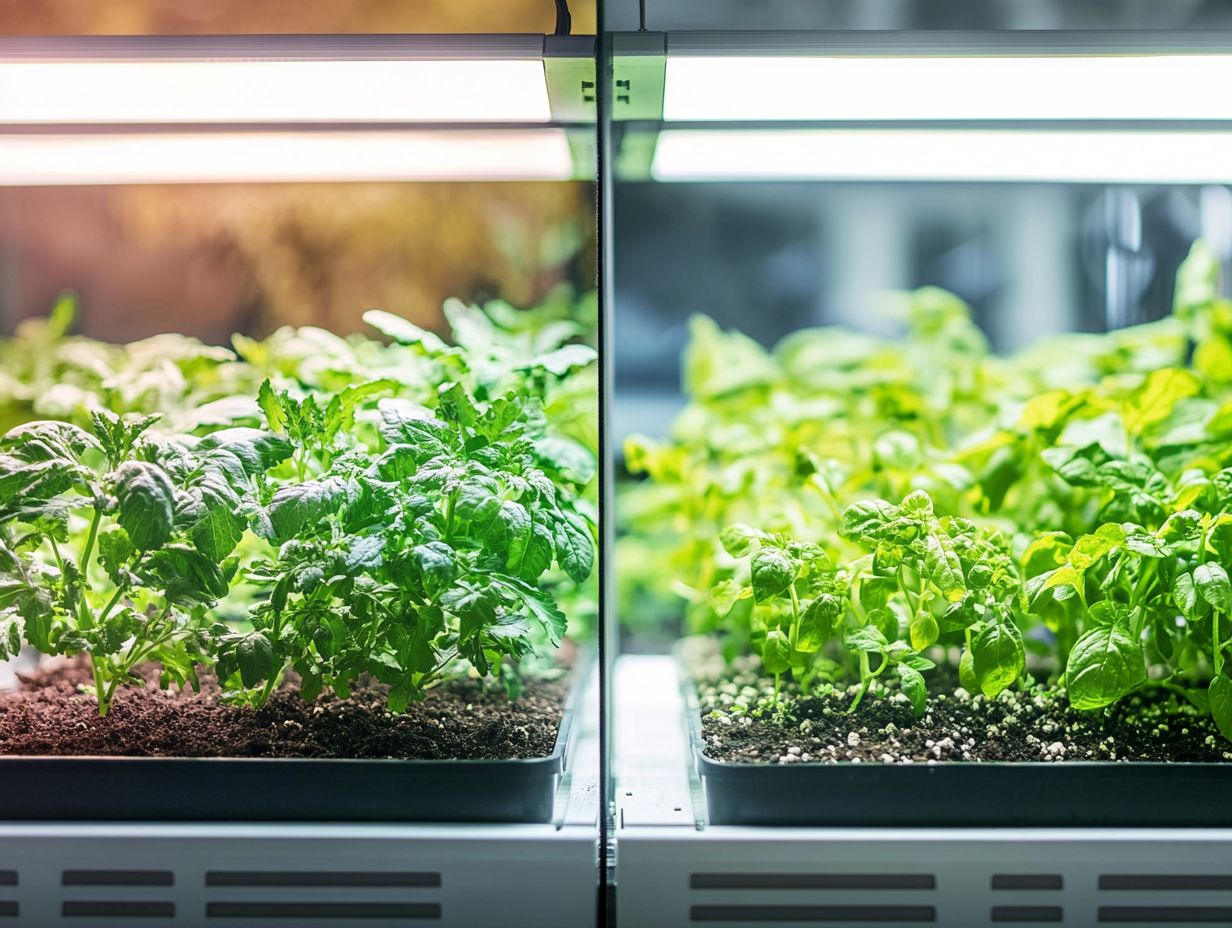
Growing plants in water through hydroponics unlocks a realm of significant benefits for you, including enhanced nutrient absorption and improved pest control. These are vital ingredients for producing high-quality, fresh produce.
This method saves water and helps your plants thrive! It also provides you with precise special plant food management, ensuring that your plants flourish under optimal growth conditions.
By employing tailored special plant food, you can deliver the exact minerals and vitamins your plants need at various growth stages. This leads to faster maturation and higher yields.
The water efficiency of hydroponic systems is truly remarkable, using up to 90% less water than traditional soil farming. This makes them an ideal choice for areas grappling with water shortages.
With a closed-loop system in place, the risk of soil-borne diseases and pests diminishes significantly. This allows you to implement smart ways to manage pests that are both effective and sustainable.
This method champions sustainability and paves the way for urban agriculture, bringing fresh produce closer to you and reducing transportation costs.
Advantages of Soil Gardening
Soil gardening, often celebrated as the essence of traditional farming, presents a multitude of advantages that resonate with organic farming enthusiasts and anyone who values natural agricultural practices.
By leveraging rich, nutrient-dense soil, you create an ideal growth medium for a diverse array of crops. This ensures robust growth while upholding superior food safety standards.
Employing effective soil preparation techniques alongside organic fertilizers not only enhances soil health but also promotes biodiversity, making it a compelling choice for cultivating crops in both rural and urban environments.
Benefits of Traditional Soil Gardening
Traditional soil gardening offers a wealth of benefits, including enhanced nutrient density and improved food safety. This makes it an appealing choice for those who champion organic farming.
By nurturing soil health, you can cultivate a diverse array of crops that flourish in their natural setting. This approach underscores the significance of microbial life and soil structure, which collectively foster robust plant growth and bolster resilience against pests and diseases.
By employing organic practices such as crop rotation, cover cropping, and composting, you effectively replenish essential nutrients in the soil. This results in produce that is not only richer in flavor but also more nutritious overall.
Reducing reliance on synthetic fertilizers and pesticides promotes safer food options, contributing to a healthier ecosystem. As advocates of soil management principles delve deeper into these advantages, traditional gardening stands as an increasingly vital pillar of sustainable farming practices.
Differences Between Hydroponics and Soil
The differences between hydroponics and soil gardening are striking. They influence various agricultural challenges, nutrient management, and overall crop productivity.
Hydroponics offers the advantage of eliminating soil-borne diseases and lowering contamination risks. However, it demands your attention for meticulous monitoring of nutrient levels and an upfront investment in equipment.
On the other hand, soil gardening embraces traditional methods that cultivate a harmonious relationship with nature. However, it s not without its vulnerabilities; pests and diseases can pose significant threats, making effective pest control an essential aspect of successful crop management.
Comparing Key Factors
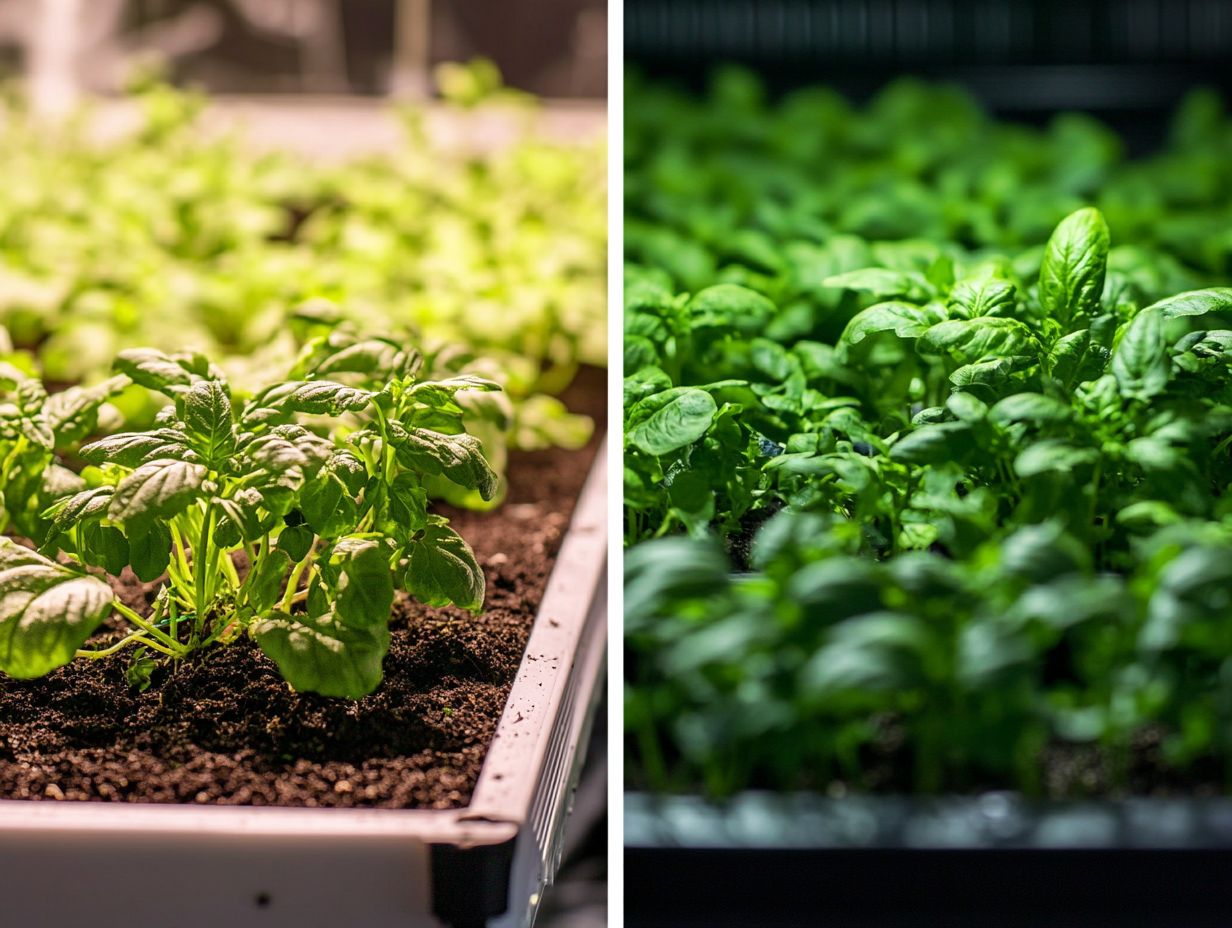
Comparing key factors between hydroponics and soil gardening unveils significant insights into their respective advantages and challenges. Hydroponics typically offers faster crop growth and more effective pest control. In contrast, soil gardening enhances environmental health and sustainability.
For instance, in hydroponic systems, you can yield produce in a fraction of the time it takes with soil gardens. This often allows you to harvest fresh produce every few weeks thanks to optimized nutrient delivery. Pest control also improves in the closed environments of hydroponic setups. Here, you can manage pests more effectively with methods to control pests without using too many chemicals, significantly reducing the need for chemical applications.
Soil gardening nurtures a complex ecosystem that improves soil health over time, promoting biodiversity crucial for long-term sustainability. The environmental impact of these systems varies greatly. Soil gardening often requires less energy input, while hydroponics can rely heavily on electricity for lighting and water circulation, influencing your overall carbon footprint.
Choosing the Right Method for Your Garden
Selecting the ideal method for your garden is essential, as both hydroponics and soil gardening offer unique advantages that will influence your overall experience.
Think about space, costs, and growth duration when determining the best approach for urban agriculture, where maximizing efficiency is often paramount. By evaluating the quality of the crops and the resources needed, you empower yourself to make an informed decision that aligns perfectly with your gardening aspirations.
Factors to Consider and Tips for Success
When deciding between hydroponics and soil gardening, weigh several key factors to ensure your success. Consider the initial investment, space requirements, and the variety of crops you want to grow. Knowing exactly what you intend to cultivate will guide you in selecting the method that delivers the best results for your gardening journey.
Evaluating your initial investments is essential. Hydroponics typically requires a higher upfront cost for equipment and systems, while soil gardening tends to be more budget-friendly. Space is another crucial aspect. Hydroponics can be incredibly space-efficient, making it an excellent choice for smaller areas. In contrast, traditional soil gardening often requires more outdoor real estate.
Choosing the right crop variety is vital as well. Some plants thrive in hydroponic environments, while others do better in soil. By carefully assessing these factors and aligning them with your gardening goals, you’ll be well-equipped to choose the most effective method for cultivating healthy, vibrant plants.
Frequently Asked Questions
What is the Difference Between Hydroponics and Soil?
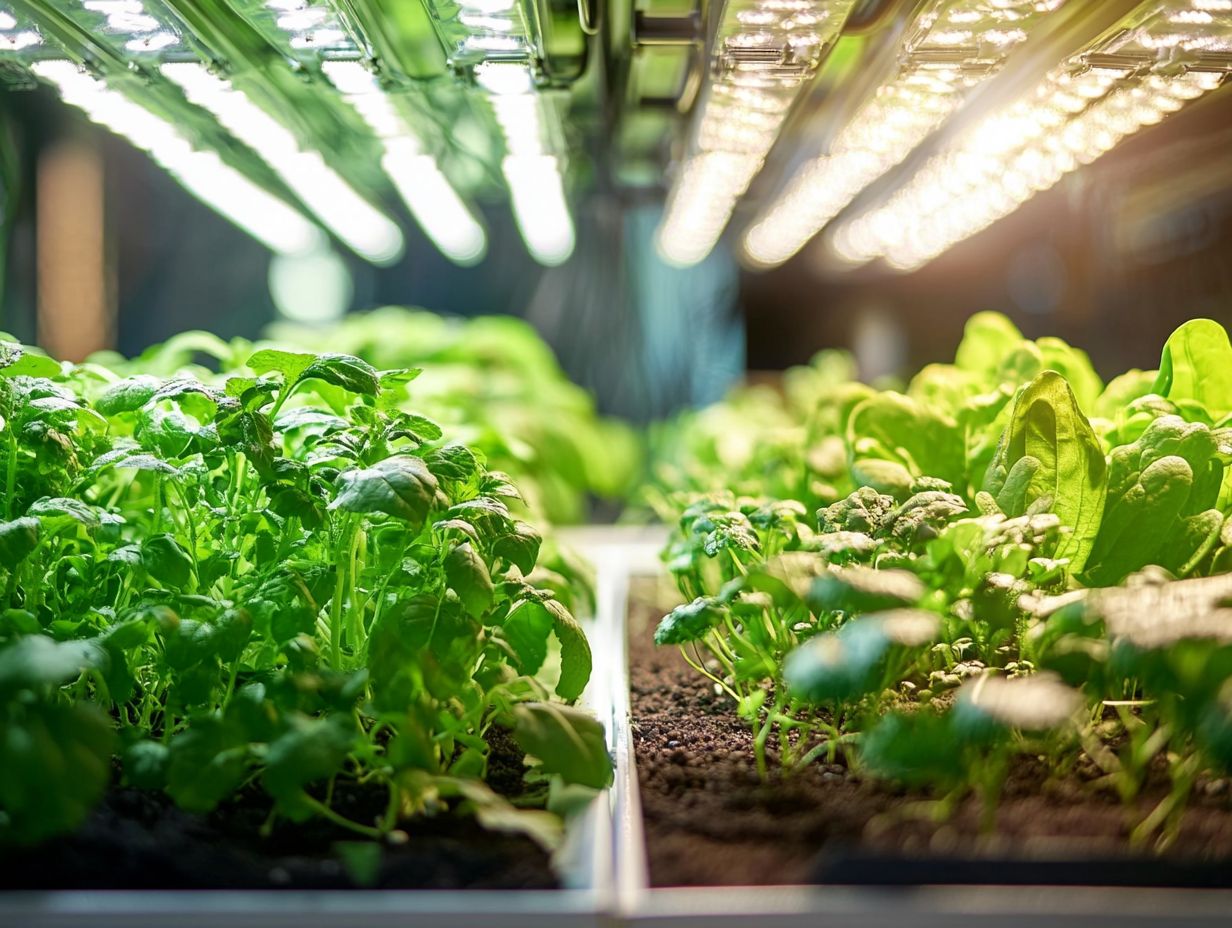
Hydroponics is a method of growing plants without using soil, while soil-based gardening is the traditional method of growing plants in soil. Many soil-borne diseases can be avoided through hydroponic methods.
What are the Benefits of Hydroponics over Soil-based Gardening?
Hydroponics allows for more control over nutrient intake, eliminates the need for weeding and tilling, and can produce higher yields in a shorter amount of time compared to soil gardening.
Is Hydroponics More Expensive than Soil-based Gardening?
While the initial setup for hydroponics may be more expensive, it can save money in the long run by using less water and nutrients while producing higher yields.
Which Method is Better for the Environment?
Both hydroponics and soil-based gardening have their own environmental impacts. Hydroponics can be more sustainable by conserving water and reducing the use of pesticides and fertilizers.
Can Any Plant be Grown Using Hydroponics?
Yes, most plants can be grown using hydroponics, but some may require specific nutrient solutions and growing conditions. Soil-based gardening may limit the types of plants that can be grown based on the soil type.
Ready to get started? Choose your method today and grow your garden!
Which Method is Easier for Beginners?
Both methods require some learning. However, hydroponics can be simpler for beginners.
Hydroponics is a method of growing plants without soil, using nutrient-rich water instead. It offers a controlled environment and removes some common gardening tasks, like weeding and tilling.
This means you can focus more on growing your plants!


